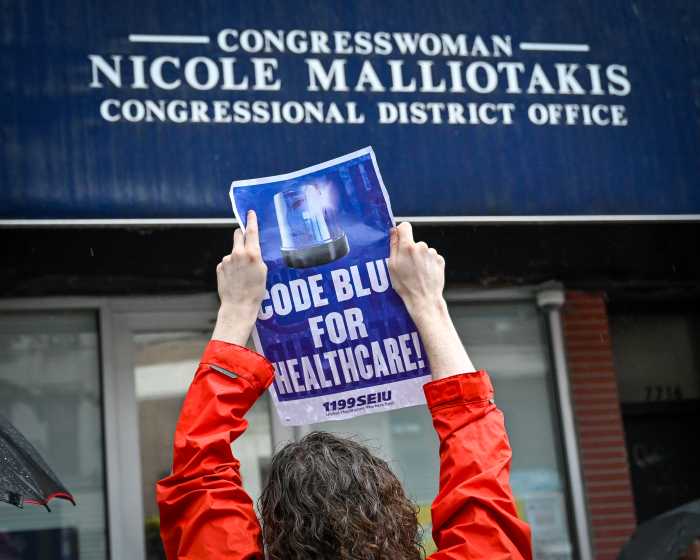 BY LENORE SKENAZY | Have we really all become convinced that we are under constant terrorist threat?
BY LENORE SKENAZY | Have we really all become convinced that we are under constant terrorist threat?
The New York Times seems to think so. In the wake of the San Bernardino shootings, it ran an article titled, “ ‘I Think About It Daily’: Life in a Time of Mass Shootings.”
But is this true?
Seems to me that since 9/11, we’ve learned we’re made of, if not sterner stuff, then at least more rational stuff. We know that violence is random and rare.
Yes, rare. Especially here.
Let’s talk about local crime for a sec.
In New York City, as in most of the country, crime peaked around 1993 and has been going down pretty steadily since then. In 1990, there were 2,245 murders in the city. Last year, the number here was 333.
That’s an amazing drop.
But what about this very instant? Isn’t crime suddenly “surging,” as the headlines suggest?
The Brennan Center for Justice at the New York University School of Law crunched the numbers we’re hearing about. It found that while the murder rate is projected to go up 11 percent in America’s 30 largest cities this year — a stat that does sound alarming — the numbers are still far lower than 10 or even five years ago. Here in New York, the projected number of murders by year-end is 357.
That is sad, of course. But as the report notes, “in absolute terms, murder rates are so low in many cities now that even an increase or decrease of just a few occurrences can cause a large change in percentage terms.”
For instance: If one person in a million dies from a deadly spider bite, and the next year two people die this weird, icky way, that’s a 100 percent increase.
But it’s not as if deadly spiders are taking over America. (Yet!)
The picture gets clearer if we think in terms of deaths per 100,000.
“In 1990, there were 29.3 murders per 100,000 residents,” according to the report, which cited FBI and police statistics. “In 2000, there were 13.8 murders per 100,000. Now there are 9.9 per 100,000.”
So while the “Murder Rate Up!” makes for a paper-selling headline, “Americans Far Safer Than They Were 20, 10, and Even Five Years Ago!” is just as true.
When I spent 14 years at the New York Daily News, my editor would sometimes remind me that people read the paper because, “They want to know what can kill them.”
But that isn’t precisely the case. No one is writing thumb-suckers about the fear of heart disease. Only the most shocking and unpredictable deaths get this kind of treatment. And these reinforce the idea that simply by stepping out of your home — or, god forbid, letting your child step out of the home — death beckons.
The Times chose to reinforce the idea that not only we are all panicking about mass shootings, but that this dread is normal and perhaps even sensible after the California and Colorado murders. It did this by surveying the public with an online question: “How often, if ever, do you think about the possibility of a shooting in your daily life?”
Naturally, the people who answered are those for whom this question resonates — many of them apparently crippled by an all-consuming fear of random violence.
“I would say I think about the possibility of a shooting in my life regularly,” wrote one 15-year-old.
The parents who responded sounded even more terrified. They wrote things like, “The oldest of my three children is in kindergarten. They have lockdown drills. I imagine the fear and chaos of a school shooting. The children, my son, the life and love that can be taken away. How will I live with myself if something happens to them? I’m so scared.”
And another:
“Is this the day? Will a shooter pick my daughter’s school because it only has one access road? What will she be thinking as she cowers in a closet? Or under a desk? Will she be crying for me?”
But the odds overwhelmingly say she will simply go about her day and take her math test.
Crime is at historic lows. We are lucky to be living in such safe times. Until we embrace reality instead of the headlines, we will not be able to enjoy life or let our kids outside.
That is a tragedy.
Lenore Skenazy is a keynote speaker who authored the book, and founded the blog, Free-Range Kids (freerangekids.com).




































